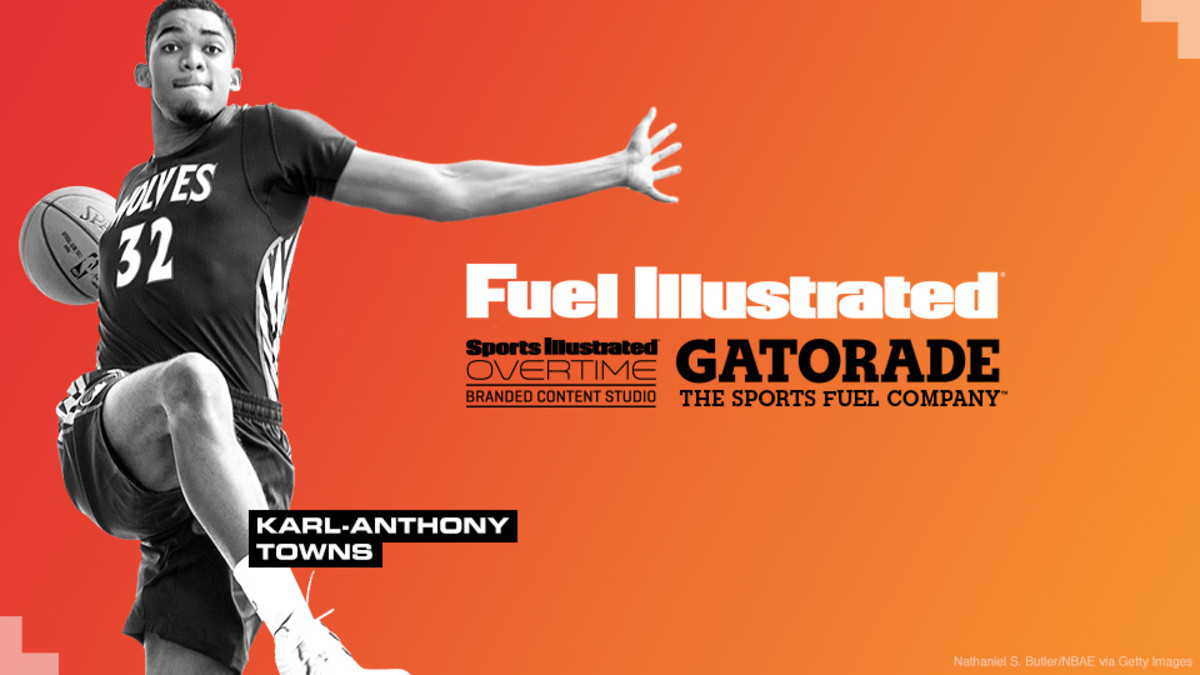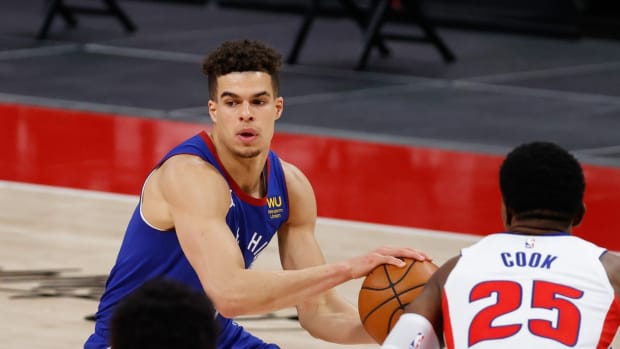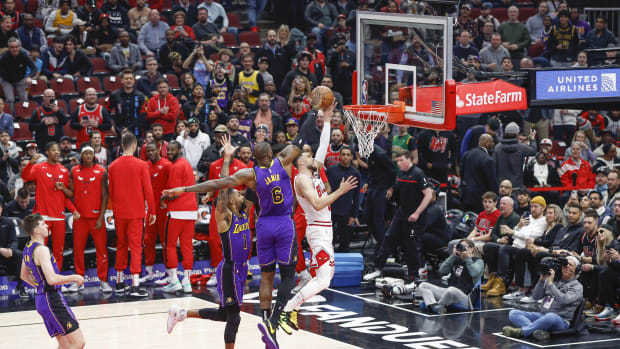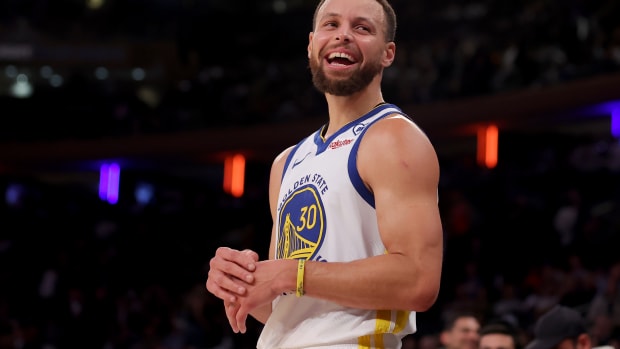
Core Values: How Karl-Anthony Towns rose above the rookie wall
Athletes have never been more aware of what their bodies need in order to reach peak performance. Fuel Illustrated is a collaboration between Gatorade and the SI Overtime branded content studio exploring how the best athletes in the world manage their daily clock—training, diet, competition and recovery—as they strive for excellence in their chosen sports.
The physical demands of the 82-game NBA regular season—for one thing, no other U.S. league requires such extensive travel—have created enough player fatigue (and injury) that the league has tried to limit teams playing back-to-back nights and has experimented with 44-minute games. For a rookie transitioning from a 39-game college season, the schedule might seem particularly daunting. Not, however, if you are Minnesota Timberwolves center Karl-Anthony Towns, former Kentucky Wildcat, and the top overall pick of the 2015 NBA draft.
Towns has played in every game of the 2015–16 season for the T-Wolves. He averages more than 31 minutes a game—the most among NBA rookies—and he’s also the league’s rookie leader in points (17.7) and rebounds (10.3) per game. The grind of the NBA have not worn him down; Towns’s playing time and production have increased as the season has gone on.
How, exactly, does the 21-year-old manage that?
“I try to treat my body like a temple,” Towns says. “I stretch, drink a lot of fluids, eat right. And I weight-lift every day.”
The SI Extra Newsletter Get the best of Sports Illustrated delivered right to your inbox
Subscribe
Towns aims to keep “every part of my body in tip-top shape,” and his 30-minute weight-room workouts before practice focus on his core. “Shoulder to knees,” Timberwolves assistant athletic trainer David Crewe says. “That’s where most big men need to be able to hold off a guy for an extended period of time.”
After some ankle and hip stretching exercises (to improve range of motion), Crewe leads Towns into strength-building squats and dead lifts. “I also like to do stuff out of a staggered stance—left foot forward, right foot back, or vice versa,” Crewe says. “Almost in a lunge position, since on the court they’re often in a similar type of open stance.”
The strength workouts typically focus on upper body one day, lower body the next, and alternate between bilateral exercises (which engage two limbs) and unilateral ones. “I try to keep him guessing and give him a variation,” Crewe says. “So no matter what comes at him, he is prepared and confident.”
Perhaps surprisingly, given the need to build stamina for the long season, Towns—and the rest of the Timberwolves—tends to stay away from in-season cardio work. That’s because the rigors of practice and games provide sufficient aerobics. Towns and his mates do, however, sweat to “rid the body of toxins,” says the T-Wolves’ vice president of sports performance, Arnie Kander. “We use a lot of saunas. And, after a practice, we’ll spend 10–15 minutes on a particular activity to get that sweat in.”
• MORE: Does the Warriors' regular-season record matter without at title?
Of course, a man cannot thrive in the paint on training alone. Towns pays close attention to his diet and hydration. At 7-feet and 244 pounds, he knocks back at least 125 ounces of water and Gatorade—in equal measure—each day.
Towns starts his mornings with water and a piece of fruit to kick-start his metabolism. Breakfast, Kander says, is a mix of protein and carbs: eggs and waffles, perhaps, and a smoothie. Towns downs another smoothie before practice, and another one after practice. Lunch often means grilled free-range chicken (Kander calls Towns a “chicken-a-holic”), a baked potato, leafy greens and other vegetables. He’ll snack on nuts and sesame seeds, and on game days he’ll have a light pregame dinner (like a PB&J sandwich with all-natural nut butter, multigrain bread and organic jam). Post-game calls for another smoothie and dinner, often a protein along with things like a kale salad and sweet potatoes. Says Towns: “No red meat, no pastries, no soda. I just don’t like them.”
Another thing sets Towns apart: his form. “Karl is unbelievable in terms of muscle and balance,” Kander says. “We do diameter tests that measure stride length and angles, etc. I’ve measured 1,200 athletes, and he’s probably in my top three or four. He just has incredible mechanics.” And he knows how to fuel them.


































